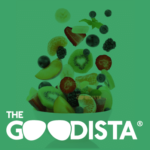 Portion control and distortion are what hinders weight loss and gain. We are what we eat. Healthy balanced food keeps us going through the day, and lets us sleep restfully all night long. Portion Contortion is the confusion that control and distortion have led to. What are we supposed to eat, how much is healthy and what is good for us? The confusion comes from the diet and weight loss advice we get. The facts are actually scientific and related to what is good body fuel as opposed unhealthy. Size has become the topic, but not in the right way.
Portion control and distortion are what hinders weight loss and gain. We are what we eat. Healthy balanced food keeps us going through the day, and lets us sleep restfully all night long. Portion Contortion is the confusion that control and distortion have led to. What are we supposed to eat, how much is healthy and what is good for us? The confusion comes from the diet and weight loss advice we get. The facts are actually scientific and related to what is good body fuel as opposed unhealthy. Size has become the topic, but not in the right way.
 Size matters in nutritional content, energy output, metabolic burn and support of an active lifestyle. Serving size, Portion plate, Daily recommended allowance, Calorie count, Sugar, Salt, Fat, Carbs, Protein… There is no end to the control, and distortion, that we are put through by media. Portion Contortion is just that. Here are my confusion busting tips on what to look out for when you start thinking about a healthier lifestyle.
Size matters in nutritional content, energy output, metabolic burn and support of an active lifestyle. Serving size, Portion plate, Daily recommended allowance, Calorie count, Sugar, Salt, Fat, Carbs, Protein… There is no end to the control, and distortion, that we are put through by media. Portion Contortion is just that. Here are my confusion busting tips on what to look out for when you start thinking about a healthier lifestyle.
Portion Contortion: Portion Control and Distortion
Food shared from one big plate is how most people in the world eat today. In the Westernised world, we do not share food from a center platter anymore. We eat the whole big plate to ourselves because it is put in front of us.
 Some 30 years ago, our Mothers told us to: “Finish what is on your plate!”. We still do that – but the plate has become bigger, and the portion doubled in size. Now we are teaching our kids to do the same, and we all suffer the health consequences.
Some 30 years ago, our Mothers told us to: “Finish what is on your plate!”. We still do that – but the plate has become bigger, and the portion doubled in size. Now we are teaching our kids to do the same, and we all suffer the health consequences.
Today huge portions are served in fast food joints and restaurants, and at home, we follow through by eating too much or even throwing food away. This luxury of choice has resulted in the expression: Portion Distortion.
Portion Contortion: Portion Distortion
30 years ago a plate of food contained less food than it does today. ‘Bigger is Better’ has grown over the years. A plate of spaghetti with meatballs has grown from 1 cup of pasta to 2 cups, and 3 small to 3 BIG meatballs. In terms of calories, this plate has doubled in 30 years. We were told to finish our plates as kids, and this is still within us. We now also believe that it is ‘normal’ that food fills the whole plate. We feel cheated if we get less.
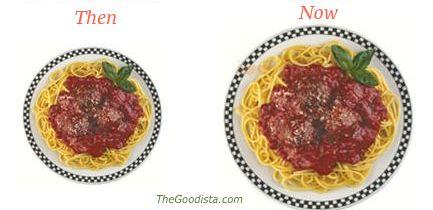
 Interestingly enough, in the home of Pasta – Italy – you do not get such big portions. Tourists who complain get stared at as if they were crazed. A ‘normal’ portion in the US or UK, is not the same normal in Italy. The serving sizes have not changed over the years – only in tourist restaurants! 🙂
Interestingly enough, in the home of Pasta – Italy – you do not get such big portions. Tourists who complain get stared at as if they were crazed. A ‘normal’ portion in the US or UK, is not the same normal in Italy. The serving sizes have not changed over the years – only in tourist restaurants! 🙂
Portion Contortion: Portion Control
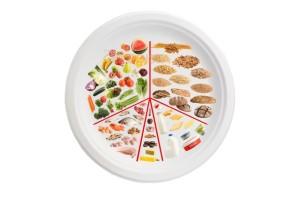 Portion Control is the reaction against Portion Distortion. When realizing that super sizing meals were becoming the norm, health authorities and nutritionists started giving lessons in what is supposed to actually be normal. These recommendations were based on scientific measurements on the body’s needs in terms of energy and nutrition. We will go through the basic need-to-knows soon.
Portion Control is the reaction against Portion Distortion. When realizing that super sizing meals were becoming the norm, health authorities and nutritionists started giving lessons in what is supposed to actually be normal. These recommendations were based on scientific measurements on the body’s needs in terms of energy and nutrition. We will go through the basic need-to-knows soon.
Many measures were used to illustrate this. Serving size, Plate size, Daily Recommended Allowance, Hand Method, Weigh Method, Calorie Count Table….. You name it – it’s out there. The result has led to Portion Contortion is a big way – and the advice simply ignored, as it feels as if freedom and individual preference is getting threatened.
Portion Contortion: Why Size Matters
You are what you eat. Everything you eat and drink affects how your body functions. And, your body’s needs change too as you go through the different stages of life.
If you feel that your energies are draining, your weight is not what you want it to be, or that time is eating up every part of you – it is time to size up your overall health and life. Check for signals that call for a lifestyle change. A Diet will not solve this long-term. Check out the next post on The GOODista on healthy weight loss — if you want some tips.
Portion Contortion: What your Body needs to function
 To function well the body needs a complete range of nutrients, including macronutrients: carbohydrates, proteins, fiber, fats and water; and micronutrients: vitamins and minerals. Nutrients help the body function normally and protect it against disease. A healthy balanced diet will make you feel good, which improves productivity, mood and enables you to cope with stress better.
To function well the body needs a complete range of nutrients, including macronutrients: carbohydrates, proteins, fiber, fats and water; and micronutrients: vitamins and minerals. Nutrients help the body function normally and protect it against disease. A healthy balanced diet will make you feel good, which improves productivity, mood and enables you to cope with stress better.
Your Body needs energy from food and drink. Energy to make the internal organs function, the brain ticking and life going. Energy to work, play, exercise, socialize, and function throughout. The body needs extra energy during childhood, pregnancy, athletic training and when you are sick or recovering from illness or surgery.
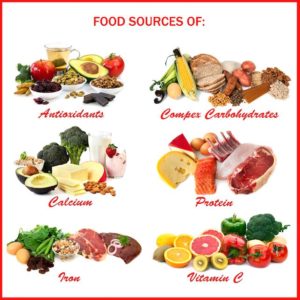 Nutrients and energy come from food. Higher quality foods give an effective and efficient healthy fuel burn. A body that gets too few nutrients or wrong energy input responds with declining health and weight gain/loss. To plan weight loss or gain is, therefore, a question of making sure you keep optimum levels of nutrition with enough energy to sustain your activities, but not too much or too little as this would have the reverse effect.
Nutrients and energy come from food. Higher quality foods give an effective and efficient healthy fuel burn. A body that gets too few nutrients or wrong energy input responds with declining health and weight gain/loss. To plan weight loss or gain is, therefore, a question of making sure you keep optimum levels of nutrition with enough energy to sustain your activities, but not too much or too little as this would have the reverse effect.
Size matters because of Health matters. Size has not to do with A Diet but The Diet we eat. The Diet is supposed to be what keeps us going all day, sleep all night and a full energetic healthy life ensues as a result. A Diet is cutting out foods groups or reducing amounts to such a level that an imbalance may follow.
Portion Contortion: Jargon Buster Guide to BMR, BMI, RDA, DRV, Cal etc.
 What does it all mean? BMR, BMI, Calorie, KiloJoule, RDA, DRV and how does it translate to you?
What does it all mean? BMR, BMI, Calorie, KiloJoule, RDA, DRV and how does it translate to you?
- Metabolism: The chemical processes that constantly occur within the body. Nutrients from food are converted into substances that the body uses, or excrete as waste.
- Basal Metabolic Rate (BMR): The measurement for how much energy you need for essential functions (breathing, heart rate) at rest. BMR rates depend on age, activity level, muscle mass, and gender. It tells you how much energy your body needs to just lie in bed. 2/3 of the energy consumed by the body is needed to just keep it functioning.
- BMI: The ratio between a person’s height and weight which tells if you are under, over- or very over weight. A persons muscle mass, and health condition (loss of muscle) can give wrong indications. BMI can indicate if you need to put on or lose weight.
- Calorie: The energy you obtain from food is measured in calories. Calorie has become a misunderstood term, as it is the nutritional value of each calorie that determines what the body can do with it. You need protein for growth and repair, carbohydrates for energy, fiber for digestion, and fat for temperature regulation and energy burn. Empty calories are the ones to look out for – and they are ones found often in unhealthy processed fast foods – so-called Junk.
- KiloJoule: The difference between calories and kilojoules is rather like the difference between miles and kilometers. Kilojoules are the metric equivalent of calories; 1 kJ equals 0.2 calories.
- Recommended Daily Amount (RDA): Recommendation by Department of Health how much of a certain nutrient was needed by different groups of a population. Criticized as it was often wrongly used to assess an individuals diet. Has been replaced by DRVs.
- Dietary Reference Value (DRV): Recommendations set for a population of adults, not children. They define the proportion of a person’s total energy intake which should come from different components of food. These include fat and fatty acids, fiber, starch, and sugars.
 Follow The GOODista in the next post about what we are supposed to eat for a full healthy life, and get the jargon buster part two to find out about Serving size, Plate size, Daily Recommended Allowance, Hand Method, Weigh Method, Calorie Count Table.
Follow The GOODista in the next post about what we are supposed to eat for a full healthy life, and get the jargon buster part two to find out about Serving size, Plate size, Daily Recommended Allowance, Hand Method, Weigh Method, Calorie Count Table.
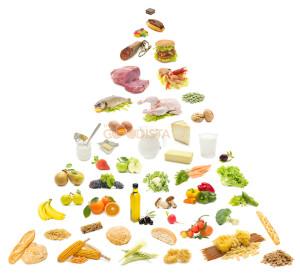 Portion Control is often misinterpreted to mean concentrating on eating less. Portion Control as a word is also so utterly boring. Understanding how much you need of each of the food groups is key to health. A lasting investment in yourself means a 360-degree review of all that you do. That drastic investment will pay off. But you have to do it step-by step, little by little and keep at it.
Portion Control is often misinterpreted to mean concentrating on eating less. Portion Control as a word is also so utterly boring. Understanding how much you need of each of the food groups is key to health. A lasting investment in yourself means a 360-degree review of all that you do. That drastic investment will pay off. But you have to do it step-by step, little by little and keep at it.
Recommended and Related:
- Portion Distortion: 10 Food Servings Now vs Then – Mental Floss
- Dieting – Cut the Confusion – Health24
- The Nutrition Glossary – NutritionData.com




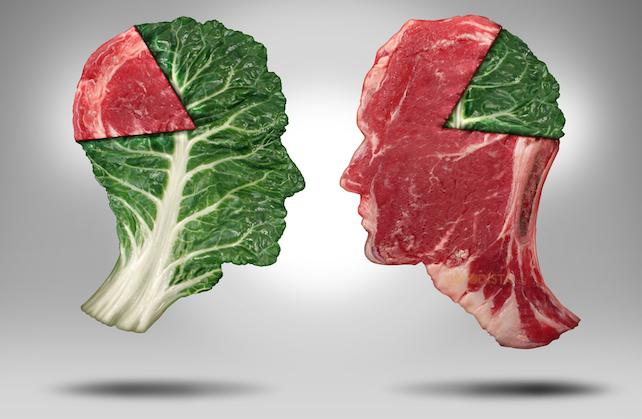







Goodista, what telling illustrations, and how fun and clever, brava! And thank you for the quick introduction into BMR, BMI, DRV….so very useful and helpful.
And above all, thank you for pointing out the obvious , not always well understood by many. I look forward to Part II.
Thanks for reading and liking the post – Part II will soon be on The GOODista – all about how to translate the jargon into a healthy diet that works for you.